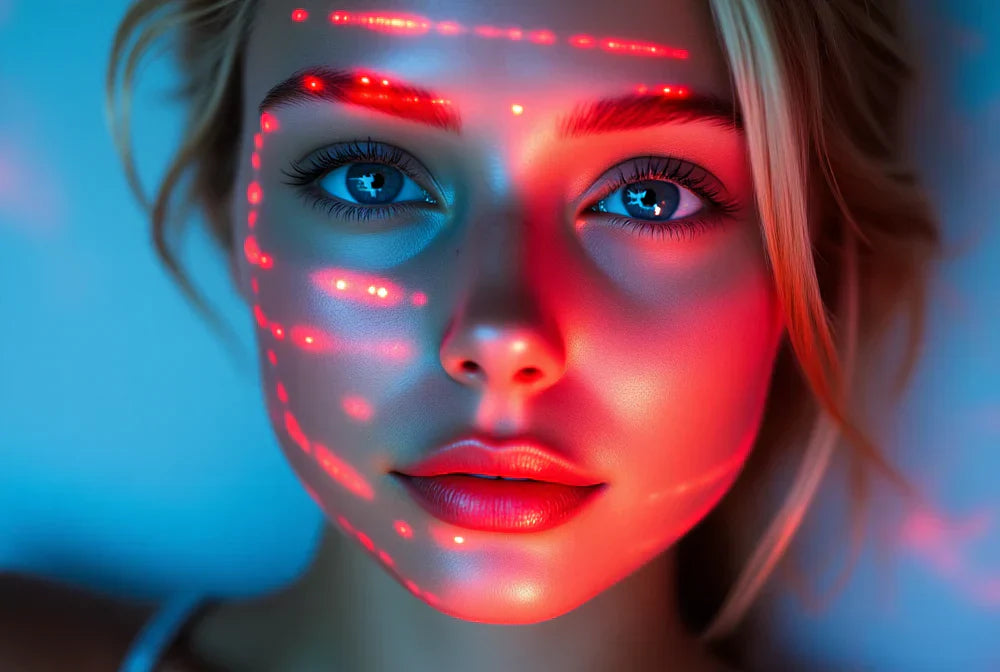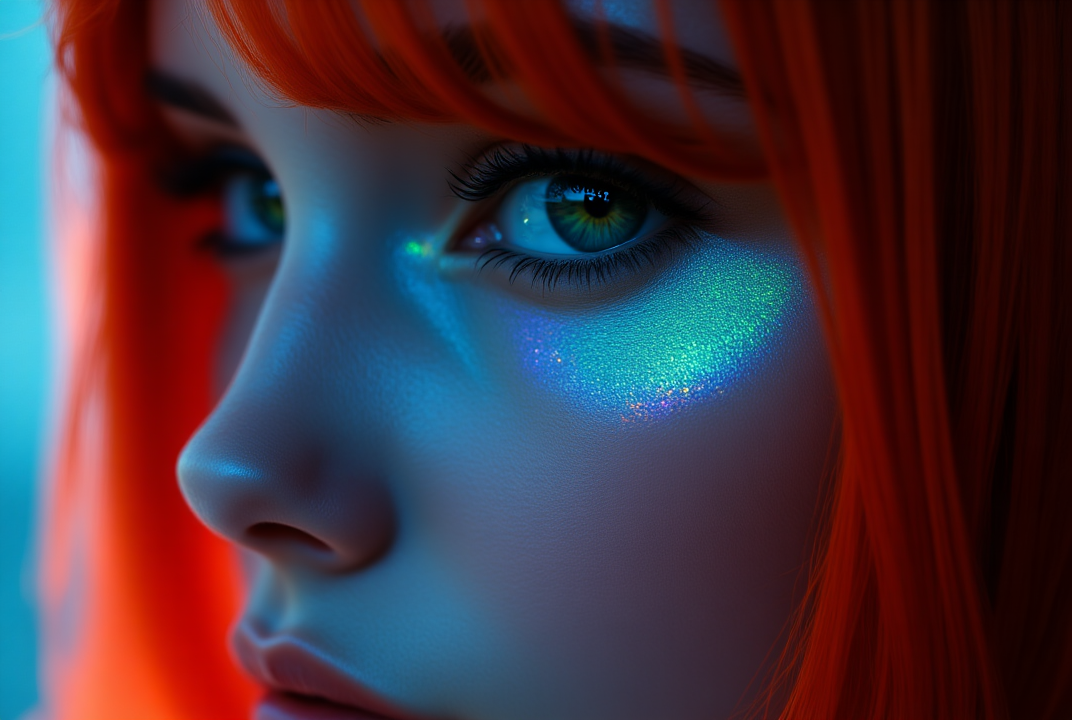Every time your skin meets a plastic LED mask shell for 15–20 minutes, there’s a trade-off in comfort and usability. Traditional LED face masks rest directly against your skin — pressing a plastic shell into your face, trapping warm air and moisture, and requiring frequent cleaning. Another consideration is what happens when plastic warms under light exposure, especially with near-infrared (NIR) wavelengths that naturally produce heat.
Your skin isn’t just a surface — it responds to its environment. When plastic sits directly against your face, a few practical concerns come up:
-
Warmth and moisture can build under the mask, which may feel uncomfortable or reduce the effectiveness of your skincare routine.
-
Residues from the surface of the plastic may come into contact with your skin during use.
-
A solid barrier can get in the way of how your serums sit on the skin or how evenly they’re applied.
-
A warm, enclosed environment under a mask may not be ideal for maintaining a fresh, breathable feel during treatment sessions.
In contrast, research on light delivery shows that light performs most consistently when it reaches the skin without unnecessary obstruction. That’s where the ETERNO Mask takes a different approach.
🔬 The Science That Informs the Design
1. Plastic + Heat = Changes in Surface Behavior
Common plastics used in consumer products—such as polycarbonate (PC), PET, or PVC—can respond to light, warmth, and moisture. Studies examining bottles and packaging materials show that when temperature increases, measurable changes can occur in the materials or on their surfaces.
-
A 2024 study found higher levels of material migration from PET bottles held at elevated temperatures under UV exposure.
-
A 2025 study of PET-bottled beverages showed increased levels of detectable compounds when containers were kept warm or exposed to sunlight.
-
A 2021 review found that various plastics can show measurable migration when exposed to heat or certain conditions.
While these studies focus on packaging—not LED masks—they highlight how plastic surfaces can change under warmth. For consumers who prefer to minimize direct contact with warmed materials, this is a relevant point of consideration.
2. Warmth & Enclosure = A Different Skin Experience
When the skin is covered tightly by a material, warmth and humidity naturally increase. This can change how skincare feels on the surface and how comfortable the experience is.
Research has shown that:
-
Increased warmth can influence how certain topicals interact with the skin’s surface.
-
Enclosed environments—like those created by films or wraps—can increase moisture against the skin.
-
Some materials, when worn tightly, may temporarily affect how the skin feels afterward.
These findings aren’t tied to LED masks specifically — they simply illustrate how heat and enclosed spaces can influence the skin’s surface environment.
3. Why Breathing Space Matters for Comfort
Mask designs that create a sealed, warm environment can feel different from those that allow more natural airflow. For many people, a bit of space between the mask and the skin makes the session feel cooler, cleaner, and less restrictive.
🧴 Why the ETERNO Mask Takes a Different Approach
The ETERNO Mask is engineered to create a more open, comfortable experience:
-
No plastic-to-skin contact: The mask rests about 3 mm off the skin, so the hard shell never presses directly into your face.
-
Better airflow: The small gap helps prevent that “warm, enclosed” feeling common with sealed designs.
-
Unobstructed light delivery: With nothing pressing onto the skin, light can reach its surface evenly without added layers in the way.
-
Less heat buildup on contact points: By reducing surface contact, the mask minimizes the warm “hotspot” sensation some users experience with enclosed shells.
The goal is simple: deliver light in a clean, open, comfortable way — without relying on a sealed plastic shell.
📝 Takeaway for Your Skin
Your skin deserves light, not confinement.
Traditional solid-shell LED masks can feel warm, enclosed, and require frequent cleaning. The science is clear that warmth and enclosure change how the environment under a mask feels — and plastics respond differently to heat.
The ETERNO Mask gives you space, airflow, and direct light delivery.
You get the benefits of LED and near-infrared light — without the closed-in, plastic-against-skin experience.



Share:
Can Humans See Ultraviolet Light: Mystery Explained